Oceans -> terrestrial ecosystems
Terrestrial Ecosystems
Terrestrial ecosystems are the communities of plants, animals, and microorganisms that inhabit the land. These ecosystems are shaped by the physical environment, including factors such as climate, soil, and topography. Terrestrial ecosystems can be found in a variety of habitats, including forests, grasslands, deserts, and tundra.
Key Components of Terrestrial Ecosystems
1. Producers: Plants are the primary producers in terrestrial ecosystems, converting sunlight into energy through the process of photosynthesis.
2. Consumers: Animals that feed on plants and other animals are known as consumers. They can be herbivores, carnivores, or omnivores.
3. Decomposers: Microorganisms such as bacteria and fungi play a crucial role in breaking down organic matter and returning nutrients to the soil.
4. Abiotic Factors: The non-living components of terrestrial ecosystems, such as sunlight, temperature, water, and soil, also play a significant role in shaping these environments.
Types of Terrestrial Ecosystems
1. Forests: These ecosystems are characterized by a dense growth of trees and are found in both tropical and temperate regions.
2. Grasslands: Grasslands are dominated by grasses and are home to a variety of herbivores, such as bison and antelope.
3. Deserts: Deserts are dry and arid ecosystems with sparse vegetation and unique adaptations to conserve water.
4. Tundra: Found in cold regions, tundra ecosystems are characterized by low-growing vegetation and permafrost.
Study Guide
1. Describe the role of producers in terrestrial ecosystems.
Producers, such as plants, are responsible for converting sunlight into energy through photosynthesis. They form the base of the food chain and provide food and habitat for other organisms.
2. Explain the importance of abiotic factors in shaping terrestrial ecosystems.
Abiotic factors, such as sunlight, temperature, water, and soil, influence the types of plants and animals that can survive in a given ecosystem. They also impact the overall productivity and biodiversity of the ecosystem.
3. Compare and contrast forests and grasslands as terrestrial ecosystems.
Forests are characterized by a dense growth of trees, while grasslands are dominated by grasses. Forests tend to have a more complex vertical structure and provide habitat for a wide variety of species, while grasslands are home to large herbivores and have a more open, expansive landscape.
4. Discuss the adaptations of plants and animals in desert ecosystems.
Desert plants and animals have evolved various adaptations to survive in arid environments, such as water-storing tissues, nocturnal behavior, and efficient water conservation mechanisms.
5. Examine the impact of human activities on terrestrial ecosystems.
Human activities, such as deforestation, urbanization, and agriculture, have significantly altered terrestrial ecosystems, leading to habitat loss, fragmentation, and biodiversity loss. Understanding these impacts is crucial for conservation efforts.
6. Identify the role of decomposers in terrestrial ecosystems.
Decomposers, such as bacteria and fungi, play a vital role in breaking down organic matter and recycling nutrients back into the soil, contributing to the overall health and productivity of terrestrial ecosystems.
7. Explain the concept of ecological succession in terrestrial ecosystems.
Ecological succession refers to the process of gradual change in the species composition and structure of an ecosystem over time. It can be primary succession (on bare rock or soil) or secondary succession (following a disturbance).
Remember to review the key components, types of terrestrial ecosystems, and the study guide questions to ensure a comprehensive understanding of this topic. Good luck with your studies!
.◂Earth Science Worksheets and Study Guides High School. Oceans
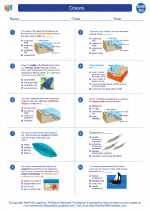
 Worksheet/Answer key
Worksheet/Answer key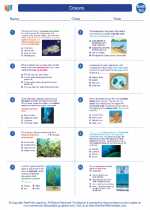
 Worksheet/Answer key
Worksheet/Answer key
 Worksheet/Answer key
Worksheet/Answer key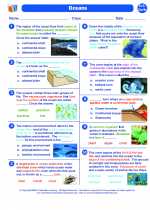
 Vocabulary/Answer key
Vocabulary/Answer key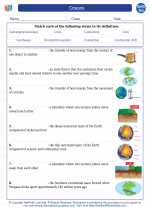
 Vocabulary/Answer key
Vocabulary/Answer key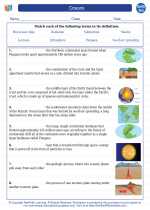
 Vocabulary/Answer key
Vocabulary/Answer key
